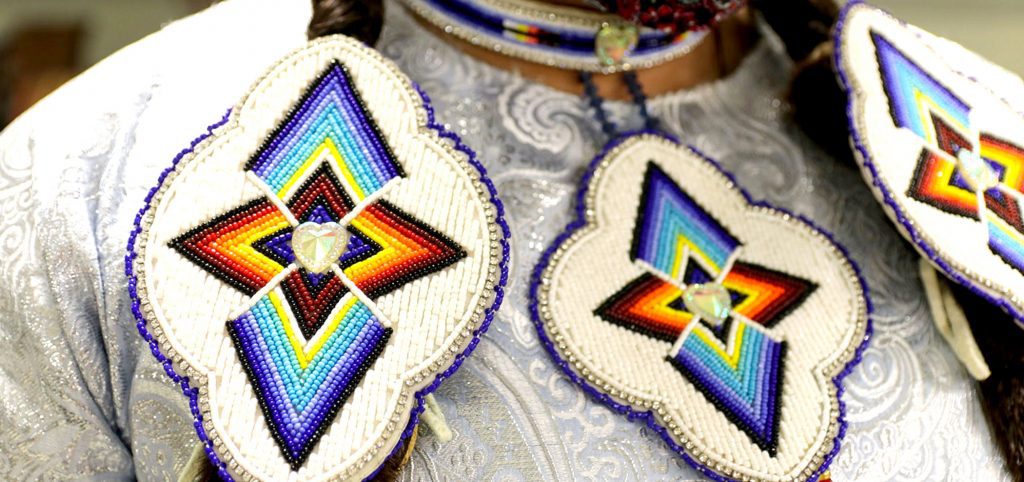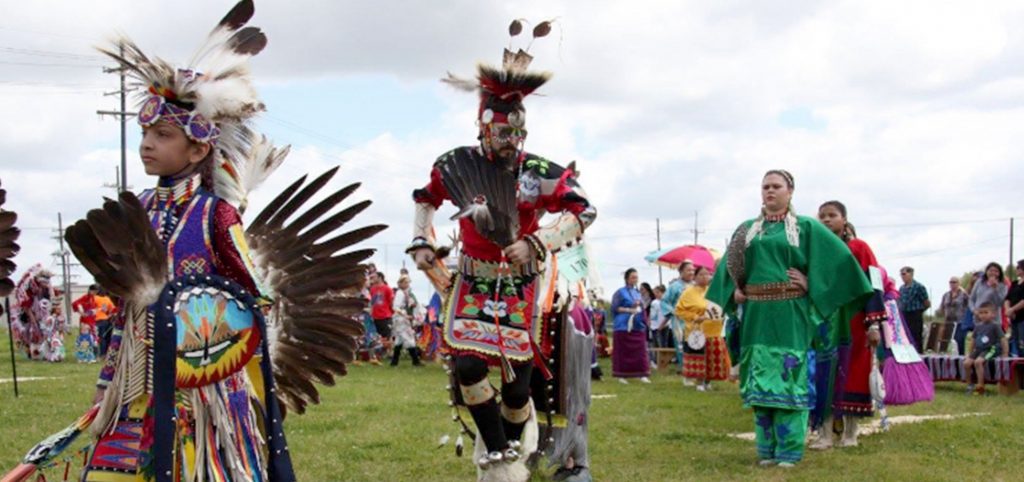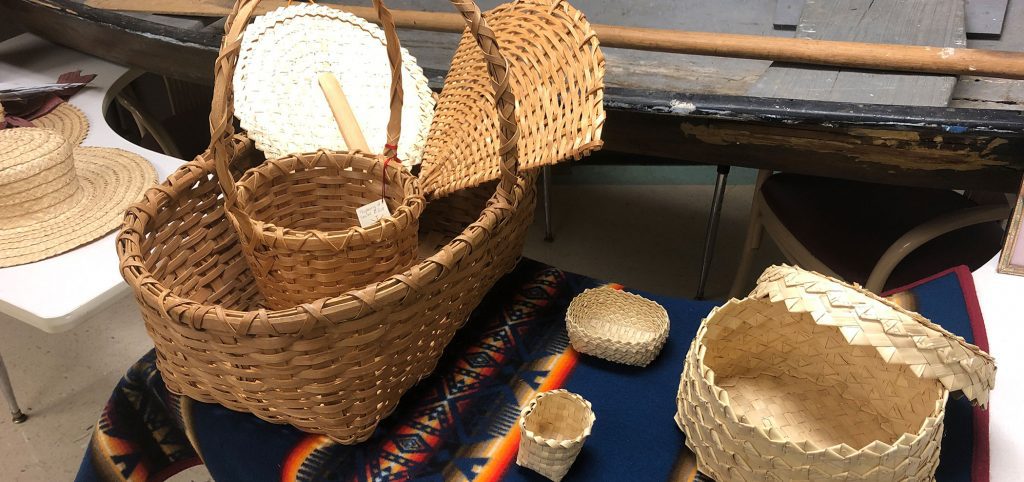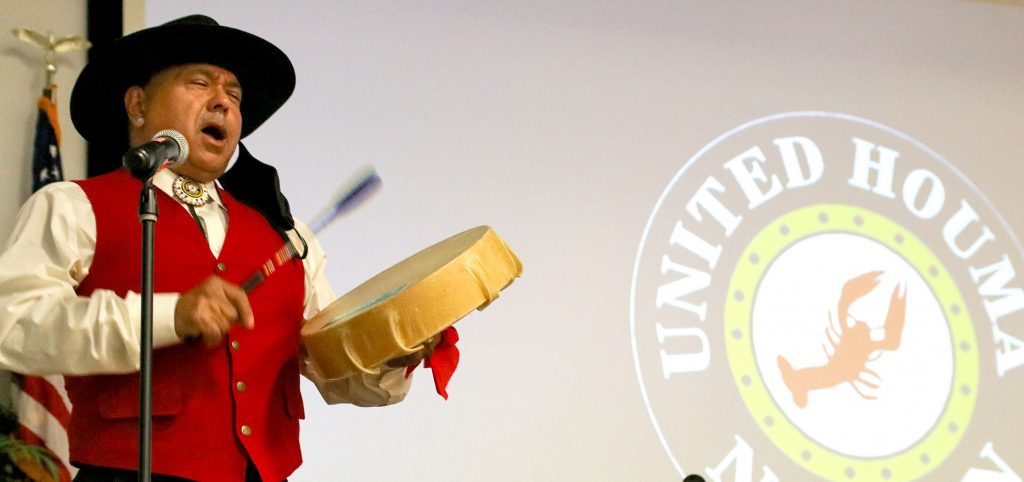Regalia

By Jade Hawkins, photo editor REGALIA Houma women from three generations — Jasmine Rain, Morning Dove and Bette Billiot — wearing traditional regalia that would be normally worn for ceremonies, dancing or prayer. They are all holding their shawls and feather fans, both would be used in dances. MorningDove says she loves to dance with her shawl and flicking the fringe as she moves a look at morning dove MorningDove’s love for otters has been fostered since she was a little girl. As a child, her family had a family of otters living on their land, and when one would accidentally find its way into one of her dad’s hunting traps, they would use the otter’s fur. MorningDove specified that they do not kill an animal in order to wear it, they get the fur when the animal gets trapped by accident or a roadkill. As she got older and began making her own Regalia, she continued using otter pelts by tying them in her hair. “When you dance with an animal that means the animal is dancing with you. You are dancing with their spirit, in other words they are still living,” says MorningDove. MorningDove’s Moccasins were a gift from her mother, Irene Hamilton, who beaded the shoes and made sure to include cheyenne turtles. Irene Hamilton passed away a few years ago and MorningDove likes to wear these moccasins in honor and remembrance of her mom. Eagle feathers are of great importance to the Houmas. They believe that because an eagle can fly the highest, then they can carry your prayers up to the heavens. When an eagle feather falls, it is prayed over and cleansed and then is used in spiritual ceremonies and/or Regalia. MorningDove has a fan of eagle feathers tied together by beading with the feature of a turtle. Turtles are MorningDove’s favorite animal and is meant to symbolize “a long life.” MorningDove highlights turtles on almost all of her Regalia. a look at Jasmine Rain Jasmine Rain makes sure that every Regalia outfit that she wears highlights her beadwork. Her beading was gifted to her by her uncle, Randy Sulliman, who is a member of the Choctaw tribe. Beadwork takes many hours to complete, so any gift of beadwork is often cherished. Jasmine Rain’s crown is also a part of her beadwork. For traditional ceremonies, her grandma, MorningDove, will place an eagle feather that was gifted to her by her uncle in the back of the crown as a ploom. Jasmine Rain will then dance with that eagle feather in the competitions often hosted at powwows. Jasmine Rain is the current Junior Miss Princess of the United Houma Nations and she loves to be able to represent her culture. Jasmine Rain says “I love having the opportunity to live my great-grandparents dream, and do it for people who could not.” On the side of her eyes, Jasmine Rain did a design of earth paint. She explains it is similar to that of war paint but this is a special clay made of materials important to the Houma culture.
Powwows

powwow in pictures There are many different styles of dance that take place during a powwow. Each dancer wears regalia unique to that style. Items such as jewelry, pottery, baskets and art are sold from vendors. They are all hand-crafted and authentic to the tribe’s origin. The drumming that takes place during a powwow is considered the heartbeat of the tribal nation The clothing worn during a powwow is called regalia. Rituals and honorings often take place at a powwow Members of the public are welcome to attend the powwows and experience the culture.
Crafts Showcase Artistry

By loryn monceaux By troy dupont
Foods and Influences

By Robbie Trosclair, staff writer For the United Houma Nation, food starts with traditional crops like corn, squash and beans — a trio known as the three sisters because of the way they sustain each other and the soil while growing together. Monique Verdin, a UHN member, believes the food they grow is important to help heal the damage done to the Earth from overfarming. “We should look down at the earth beneath us in order to look forward,” Verdin said. With the crops grown, the UNH can start to celebrate their history by creating traditional foods. Ida Aronson, who runs the United Houma Nation farm, says growing traditional produce is helping them connect to their past through traditional recipes like Maque Choux (pronounced Mock-Shoe), a recipe made from corn and herbs. Other traditional dishes include dumplings made from persimmons, custards made from squash and traditional teas. “I’m hoping to bring back more nutritional foods to the surrounding Houma area,” Aronson says. Louise Billiot, who grew up with indigenous dishes like the ones above, says another traditional dish she grew up with is fry bread. “It’s simplicity is why it’s so good,” Billiot says. Billiot says that when she was a child growing up, she remembers the cooking being plain because they didn’t have much. Even her gumbo recipe just consists mostly of onions, chicken, water and filé, a thickener used in gumbo made from ground sassafras, a traditional UHN crop. In fact, the Houma introduced many ingredients that are now considered Cajun — foods like grits, sweet potatoes and beans, she says. A community farm Cooking With annie’s restaurant Recipes & Foods
The Musical Backdrop

By Jade Williams, features editor For the United Houma Nation, music represents history. The songs of the tribe are about the lands and the waters. They are also about tribal leaders who were here long ago. “Some of the songs we sing are about the culture and about some of the stuff my people went through,” says August Creppel, chief of the UHN. “Most of the songs we sing though are Native prayer songs.” Some of the songs that the tribe sings are in English, Choctaw and some are in French. These songs are tribal songs that were passed down from elders. According to an article Ten Native American Music Traditions, singing is popular in Native American cultures and is integral to the storytelling purpose of many Native American songs as well as helping preserve Native American languages. Native American tribes all use the same instruments like drums, flutes, rattles and whistles, but the construction and sounds of their instruments vary. The drum is the oldest instrument and is significant to Native American music. “I use a hand drum, ” Creppel says. “We use big drums that we make out of different skins like elk skins We use regular keyboards and things like that.” Creppel says they play music with those instruments at ceremonies like weddings, before meetings and at powwows. He says that before the virus, there would be powwows held every March, but recently they had to shut all of that down. Creppel says he and his wife would also travel all over the country and go to festivals and culture centers, but all of that is also shut down. Outside of music being played at ceremonies, music has also had a huge impact on some of the tribal members when they were growing up. Roxanna Foret from the tribal council says she remembers delivering food boxes to people during Christmas time where she could smell the food and hear swamp pop music playing from people’s homes. “That for me, the old swamp pop music playing, just growing up, that is something that I remember a lot of like in a home like on Saturdays, just that type of music,” Foret says. “Or the French music. That’s something too on the radio. Like my grandpa, he would be up so early and the French music would be playing and there would be coffee brewing.” Lanor Curole, another tribal member who grew up in Golden Meadow, says she remembers waiting for the bus in morning as a child where they would listen to the KLEB radio station’s French program. “It was all French music and they only spoke French, and that French program would play every morning and they would do birthday wishes to people and it was so exciting if they wished you a happy birthday,” Curole says. “But that’s what we grew up hearing.” Curole says their people were traditionally stomp dancers and that there is some very distinct music that goes along with the ceremony stomp dancing. “Our people were traditionally stomp dancers and there are some very distinct music that goes along with the ceremony stomp dancing,” Curole says. “Our generation, that’s what we grew up listening to and hearing from our parents and grandparents.” chief creppel on hand drums PODCAST Dr. Gary LaFleur, Louisiana native and professor of biological sciences at Nicholls State University, discusses Isle Dernière before it became a popular resort.
